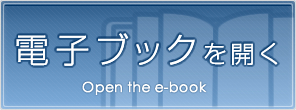For the Safety Navigation In Japanese Coastal Waters page 46/120
このページは For the Safety Navigation In Japanese Coastal Waters の電子ブックに掲載されている46ページの概要です。
秒後に電子ブックの対象ページへ移動します。
「電子ブックを開く」をクリックすると今すぐ対象ページへ移動します。
概要:
- 42 -⑥ Signaling in the Case of Overtaking Any Other VesselAn overtaking vessel equipped with a whistle, shall, when intending to overtake any othervessel in a traffic route, give the following sign....
- 42 -⑥ Signaling in the Case of Overtaking Any Other VesselAn overtaking vessel equipped with a whistle, shall, when intending to overtake any othervessel in a traffic route, give the following signal provided that this should not apply to thecase where overtaking signals prescribed in the Law for Preventing Collisions at Sea aregiven:a. When intending to navigate on the starboard side of the other vessel, they should give oneprolonged and one short blasts in succession on the whistle;b. When intending to navigate on the portside, they should give one prolonged and two shortblasts in succession on the whistle.⑦ Method of crossing Traffic RoutesAny vessel intending to cross a traffic route shall cross the route promptly at angles asclose as possible to the right angles with the traffic route. Vessels crossing traffic routesshould cross promptly at angles as close as possible to right angles to the traffic routes.⑧ Prohibition of anchoringNo vessel is allowed to anchor in the traffic routes. Mooring to vessels at anchor will beregarded as anchoring.⑨ Traffic separationa. Within Uraga Suido Traffic Route, Akasi Kaikyo Traffic Route and Bisan Seto EastTraffic Route, all vessels should navigate in that portion of the traffic routes which lies onthe starboard side of the central line of such routes. (Refer to Fig. 2-13, 2-14, 2-15)Fig. 2-13 Fig. 2-14NakanoseTraffic RouteAkashi KaikyoTraffic RouteUraga SuidoTraffic Route

